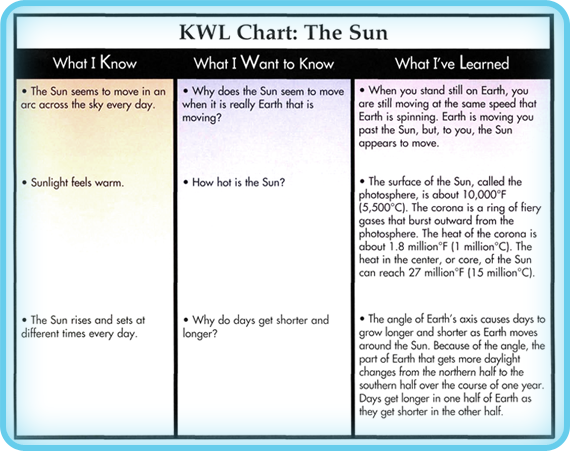The Sun
At about 93 million miles (150 million km) away, the Sun is the closest star to Earth. If you could fly to the Sun at 100 miles per hour (161 km/h), it would take you more than 100 years to get there. It takes heat and light from the Sun just 8 minutes to reach Earth. The heat and light provide Earth with energy.
As Earth rotates on its axis, it also moves in an orbit around the Sun. It takes Earth about 365 days, or 1 year, to orbit the Sun. Over the year, the Sun’s path across the sky appears to change. For example, in the Northern hemisphere, the sunset is slightly southwest on the horizon in the winter and slightly northwest in the summer. In the winter, the Sun rises later and sets earlier than it does in the summer. These seasonal changes happen because Earth rotates at an angle to the Sun.
 |
|
This is a KWL chart. To use a KWL chart, choose a subject for your chart. Begin by filling in the left column with what you
know. Then ask yourself what you want to know about that subject. Write your questions in the middle column. As you study
the subject, write down what you learn in the third column. This KWL chart shows facts about the Sun.View Larger Image
|
|
Rosen Publishing
|





